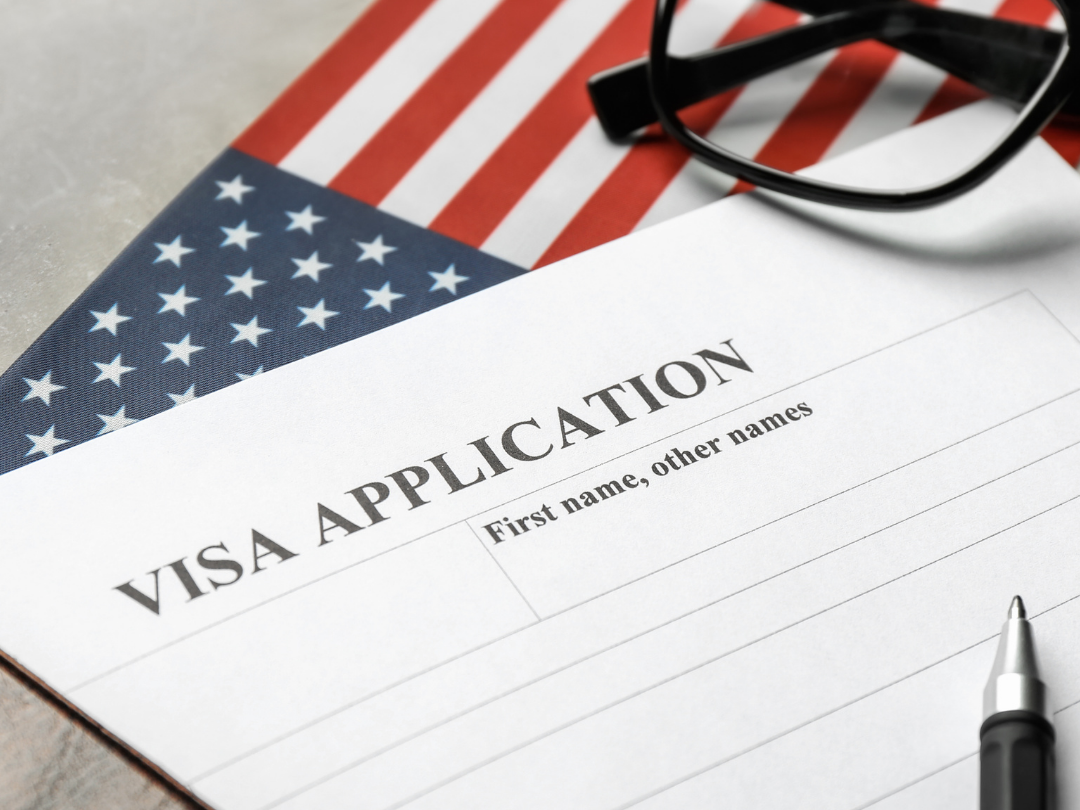If you are applying for Fall (August) 2024, the clock has begun to tick. So, don’t delay. To help you streamline your application process effectively, we have prepared a detailed timeline. Take a look at the steps you need to take:
Begin Your Preparation: October-December 2023
Register for GRE and TOEFL/IELTS: Take the first step by registering for the GRE and TOEFL/IELTS exams. We recommend completing these exams by 15th December 2023. Dilip Oak Academy can assist you with your preparation for these exams. We are also now an ETS Authorized Test Center for GRE and TOEFL exams.
Research and Shortlist Universities: September-October 2023
Explore university websites and make a preliminary list of universities which meet your requirements considering:
Broad specializations you are interested in: while shortlisting, ensure that the programs offered by your selected universities align with your interests.
Expected GRE score: depending on your GRE score you can choose rank of the universities where you want to apply.
Academic record: your academics play an important role in the entire application process and a good academic record can compensate for a low GRE score.
Budget: select universities keeping your finance in mind; however, there are many universities and financial institutions that offer financial assistance to deserving students.
Recommendations by seniors studying in American universities: first-hand reviews from your seniors who are currently studying can prove useful in shortlisting rather than depending on the information given on the university website.
Gather Necessary Documents: August-November 2023
Craft a Stellar Statement of Purpose (SOP): SOP is a crucial document that provides insights into your purpose of joining the course and university, your personality, experience in the field and long-term goals. It should be around 500 to 800 words long, precise, interesting, grammatically and technically sound.
Arrange Transcripts: Prepare four sets of college and university transcripts.
Request Recommendation Letters: Choose your recommenders, preferably college professors, project guides, or employers, and request recommendation letters. Most universities require three recommendation letters.
Finalize University Choices and Apply: October-December 2023
Shortlist 8 to 10 Universities: After thorough research, finalize your preferred universities.
Complete Online Applications: Ensure that you complete the online application process by 31st December 2023. While many universities accept online applications, some may require physical documents via courier, so be mindful of deadlines.
Apply Early: While many universities accept applications even till 31st March 2024, we recommend that you apply before 31st December.
Forward Test Scores: Request ETS to send your GRE and TOEFL scores to the selected universities (scores take a minimum of 2 weeks to arrive).
After Sending Applications: Await Decisions and Prepare for Visa
Admission Decisions: You can expect to receive admission decisions around February/March 2024. Once you receive an offer, promptly email your acceptance, especially if funding is involved.
Obtain I-20: Upon acceptance, complete the documentation formalities, and the university will send you the essential I-20, an immigration document required for obtaining a visa.
Prepare for Visa: Review the total cost of one year mentioned on the I-20 and prepare the necessary visa documentation.
Visa Application Process: Apply for a visa interview date after receiving your I-20. Generally, students start applying for a visa from the third week of April. Once you get the visa date, proceed with the interview and complete the remaining formalities until your departure date.
Time waits for no one, so start your preparation now and unlock a world of opportunities for your academic journey in the USA!
At Dilip Oak’s Academy, we understand the significance of this journey, and our admission counseling services can guide you through the entire process. With our expertise, we have successfully sent 32,000 students to various prestigious American universities like MIT, Stanford, Cornell, and Carnegie Mellon. To enroll in our comprehensive services, book a free consultation or call us at 91-020-67444222.
We offer GRE, TOEFL, and IELTS coaching, GRE Self Prep and guide students with university selection, application essays, and visa counseling under our Admission Counseling Services for USA, Germany and Canada.
For many years, the Graduate Record Examination (GRE) has served as a crucial first step for students planning to pursue graduate study in the United States. This year, the GRE will be shorter thanks to a series of reforms. The test will have shorter versions of each section, but will still accurately assess test takers’ verbal reasoning, quantitative reasoning, critical thinking, and analytical writing skills. If you plan to take the GRE General Test after September 2023, you should familiarize yourself with these changes and prepare accordingly. The following is a comprehensive summary of all the key modifications to the new, shorter GRE:
Change 1: Reduced Number of Questions and Shorter Testing Period
The length of the GRE General Test has been reduced from 4 hours to 1 hour and 58 minutes. This is a significant change aimed at improving test-takers’ concentration and decreasing test fatigue. The reduced time has been achieved by implementing the following changes in the test.
Reduced number of questions: The number of questions in the Quantitative Reasoning and Verbal Reasoning tests will be reduced. The number of questions in each section will drop from 40 to 27. These 27 questions will be broken up into 12 and 15 for for Section 1 and 2 respectively. This change applies to both quantitative reasoning and verbal reasoning. Despite the reduction in total number of questions, the average time allotted for each question has remained unchanged.
Removal of ‘argument’ section: “Analyze an argument” task has been removed from the analytical writing section. Moving forward, the AWM section will only have the “analyze an issue” task. As a result, you’ll only have to write only one essay.
Removal of the Unscored section: The GRE currently has an unscored section that is used for evaluation of questions by ETS. This section will be removed from the new, shorter GRE, as it does not affect the test taker’s final score.
No Scheduled Breaks: The current 10-minute break after the two hours of the test will be eliminated because the new test time will be less than 2 hours. Those taking the GRE at a testing center can still take unscheduled breaks; however, the clock will not stop. Exemptions to this policy will be made for test takers with disabilities or health-related needs.Online examinees are not permitted to take unscheduled breaks during the exam.
Change 2: faster Reporting of Test Results
Official GRE scores will be reported to test takers within 8-10 days after the exam. This is a significant improvement over the previous time frame of ten and fifteen calendar days. In the long run, this will save time for those filling out applications.
What won’t change as the GRE moves from its current format to a shorter one?
Despite the fact that the GRE General Test will be shorter, many features will remain unchanged. Given below are the important aspects of the test that won’t be changing:
- The basic structure of the GRE, including the presence of Analytical Writing, Verbal Reasoning, and Quantitative Reasoning sections, will remain unchanged.
- Scoring: All three sections will use the same scoring procedure, and the shorter test will use the same performance scales as the current test.
- The shorter GRE will still be section adaptive I. e., the difficulty level of the second section will be based on your performance in the first section.
- Although the GRE has been shortened, testing fees have not changed.
- Graduate and professional schools will use scores from the GRE General Test similarly, regardless of the length.
- As before, you can retake the GRE General Test up to five times in any rolling 12-month period (365 days), with a maximum of one attempt every 21 days.
- Your GRE scores will be considered valid for five years after your test date.
Why the ETS is changing the test format
These changes are based on feedback from previous test takers and are the result of expert analysis about how a better experience could be introduced for test takers while retaining the strong validity and reliability that universities expect.
Applying to graduate and professional programs is time-consuming. While you want to show your potential in a comprehensive way, you also want to get through your application checklist ASAP. Shortening the test will help students to stay focused and reduce fatigue. The shorter test will also allow ETS to deliver GRE scores faster. Students can complete their applications sooner as well.
What is yet to be announced?
Verbal and Quantitative Reasoning have had their total number of questions cut down to 27, but how those questions will be distributed among the subsections such as sentence equivalence, text completion and reading comprehension in verbal section, remains to be seen.
We also don’t yet have details on how the scoring algorithm might adapt to the reduced number of questions.
Which version of the test should you take- Shorter GRE vs. Current GRE
You should weigh your application deadlines against your personal preferences when deciding between the shorter GRE and the current GRE. The current GRE will be phased out on September 22, 2023, in favor of the shorter GRE. If your application deadline is early October or earlier, you should probably take the current GRE. However, if you have more time and your application deadlines are not pressing, you may want to take the shorter GRE because of its streamlined format.
At Dilip Oak’s Academy, We also provide detailed guidance on these processes under our Admission Counseling Services, including a selection of universities, documentation process and visa counseling, and mock visa interviews. In addition, as India’s leading Study Abroad Consultants, we have helped more than 33,000 students to secure their dream admits for various universities in America including MIT, Stanford, Cornell, Carnegie Mellon and other top-ranked universities.
We also offer GRE, TOEFL, and IELTS coaching, GRE Self Prep and guide students with university selection, application essays, and visa counseling under our Admission Counseling Services for USA, Germany and UK. To enroll, call us on 91-020-67444222, 91-8007878495

Dilip Oak’s Academy’s annual Pre-Departure Orientation is back for all students joining American and Canadian universities in the fall of 2023. This is your best opportunity to get all of your questions answered, learn about student life in the US, and connect with other students enrolling in the same university.
18th June 2023
DP Road, Near Mhatre Bridge, Erandwane, Pune 411004
This session is open to all students joining US and Canadian universities for Fall 2023
Parents are strongly advised to attend
Conducted by Mr. Dilip Oak himself, this session will clear all your doubts regarding:
- Pre-Departure: Forex Regulations, Medical Checks and Immunization, Insurance and Port of Entry Procedure
- Life in the US: Campus Tips, Accommodation and Jobs after MS
Additionally, you’ll be able to arrange shared housing and coordinate travel with other students who are enrolling at the same university!
Also receive a free copy of “Get Set Go”, a guide on studying in the USA by Mr. Dilip Oak!
Event Chief Guests
Jennifer Gruber (Associate Vice-president)
California State University, Chico
Dr. Seema Sehrawat (Chief of Staff)
California State University, Chico
Session Timings
As the capacity of the venue is only 1,400 pax, we have split the program into two groups based on alphabetical order. Find details of which session to attend below:
Group 1 (Timing: 8:30 am to 10:30 am)
Students joining universities with names ranging from A to S (e.g. Arizona State University, Rochester Institute of Technology, San Diego State University)
Group 2 (Timing: 3:30 pm to 5:30 pm)
Students joining universities with names ranging from T to Z (e.g. Texas Tech University)
Entry-Passes for the Event
Students are expected to collect entry passes for themselves and their parents from the Academy.
Collect passes for event at the Academy between 9:00 am to 6:00 pm
If you are unable to collect the entry pass before 18th June, click HERE to fill up the required form and carry the same along with you on the day of the orientation at least 45 minutes before the program.
Prerequisites to Obtain the Entry Pass
- Admission Centre and Visa Counseling Students
Produce your Academy I-card (compulsory) and a photocopy of the I-20 form. - All Other Fall 2023 Students
Produce a photocopy of the I-20 form, or
stamped F1 visa, or
the admission letter from the university (in case you have not received the I-20 form/visa).
FREE seminars on bachelor’s and master’s in America!
Along with the Pre-departure Orientation, we have also organized FREE seminars on bachelor’s and master’s in America! Those aspiring to study in the USA, this seminar is the right place for you to get complete information about studying abroad.
18th June 2023 at Siddhi Banquet Hall DP Road, Near Mhatre Bridge, Erandwane, Pune 411004
11:30 AM( English and Marathi)
6:30 PM (English)
This seminar will cover
- Present status of the American economy and job opportunities
- Funding your education
- Prerequisite examinations
- Application timeline
Book your seat Here
Please share this information with all your friends.
Prior registration is mandatory.
See you there!

A glimpse of the Fall 2023 Pre-departure Orientation
Like every year, Dilip Oak’s Academy, in association with HDFC Credila, conducted the Pre-Departure Orientation for students joining US universities in August 2023 (Fall semester) for bachelor’s and master’s degrees. This event is one of the largest of its kind in India and has been conducted since 1996.
The event was held in two sessions at Siddhi Banquet Hall and was attended by an audience of around 1500, including students and parents. Dr. Jennifer Gruber, Associate Vice-President; Dr. Seema Sehrawat, Chief of Staff, both from California State University Chico and Ms. Sarika Oak, Director (Operations) Udemy, San Francisco, graced the event as chief guests.
Mr. Oak gave crucial information on things to do before traveling to the US, like medical checks, immunization requirements, insurance and foreign exchange regulation.
Mr. Oak explained that the overall unemployment rate in America is all-time low, i.e., 3.6% and the tech unemployment rate is only 2% in May 2023, suggesting that demand for tech professionals remains.
He further added that the U.S. Bureau of Labor Statistics projects that the U.S. will need over 1 million more tech professionals over the next decade. While some large IT companies may have experienced some job losses in recent years, there are still many opportunities for employment in midsize and small IT companies. Moreover, jobs in the non-IT field like engineering, architecture, and finance are not affected at all.
Sarika Oak threw light on campus life, accommodation and security, and important documentation like Social Security Number. She also discussed how to get financial assistance, including campus jobs and job opportunities, after completing the degree. She urged students to be proactive and focus on opportunities that would make them well-rounded, work-ready employees. She emphasized that relationships and networks are important in securing internships and jobs, so students should make friends beyond the Indian community.
Dr. Gruber and Dr. Sehrawat also pointed out that students engage in campus life, make friends beyond the Indian community, and explore student clubs and leadership opportunities. Students should take advantage of the different on-campus employment.
Both students and parents were greatly impressed by the program. Mrs. Geeta Velankar added, “The guidance given was very professional and comprehensive, covering all aspects from settling down in the university, finding housing, and even landing a job. Now, I can rest assured that studying in an American university far away from home will not be a struggle for my child.”
Sameer Bhuvaji said, “Before the orientation, we thought spending such large sums of money on our children’s education was a big gamble. But, Mr. Oak and the university representatives assured us that our children would have good job prospects in America after their studies. So now, we see the money spent on their education as an investment.”
Academy student Sharvari Joshi shared, “I got assistance from the academy regarding the selection of universities, drafting of Statement of Purpose and visa interview. The entire process was seamless, and due to Oak sir’s guidance, I secured admission from the University of Michigan, Ann Arbor, for Mechanical Engineering.
Informative Seminars Receive Overwhelming Response
Along with the Pre-Departure Orientation, the academy conducted two free seminars on Masters’s education in America. Both seminars received great responses from around 1600+ students and parents.
In the master’s seminar, Mr. Oak highlighted the trending specializations for Computer Science, especially Artificial Intelligence, Machine Learning, Cyber Security, Robotics and Data Science. Also, engineering fields like Mechanical, Electrical, Civil and Bio-Medical have very good job opportunities.
At Dilip Oak’s Academy, We provide detailed guidance on these processes under our Admission Counseling Services, including a selection of universities, documentation process and visa counseling, and mock visa interviews. In addition, as India’s leading Study Abroad Consultants, we have helped more than 30,000 students to secure their dream admits for various universities in America including MIT, Stanford, Cornell, Carnegie Mellon and other top-ranked universities.
We also offer GRE, TOEFL, and IELTS coaching, GRE Self Prep and guide students with university selection, application essays, and visa counseling under our Admission Counseling Services for USA, Germany and UK. To enroll, call us on 91-020-67444222, 91-8007878495
Curricular Practical Training or CPT is a type of work authorization that permits students holding F1 visa to work off-campus in a position directly related to their major or program of study. CPT allows students to engage in internships, cooperative education programs, or other work experiences that are an integral part of their curriculum. CPT can be full-time or part-time, paid or unpaid, and may take place during the academic year or summer breaks. In this blog, we will discuss the details of CPT, and benefits for F1 visa holders.
Consulting with the designated school official (DSO) and following the necessary procedures will help students maximize the advantages of CPT while maintaining their legal status as international students.
Duration of CPT
The duration of Curricular Practical Training (CPT) can vary depending on the program and the academic institution’s guidelines. Generally, CPT can be undertaken on either a part-time or full-time basis. Full-time CPT allows students to work for more than 20 hours every week during official university breaks or vacation periods, while part-time CPT limits students to working not more than 20 hours per week while school is in session. The total duration of CPT typically should not exceed 12 months. However, it is important to note that engaging in full-time CPT for more than 12 month can make students ineligible for Optional Practical Training (OPT), which is another work authorization available to F-1 visa holders after completing their academic program.
Eligibility for CPT
You must have been a lawful full-time student in the United States for one academic year (i.e., two full terms) to qualify for CPT unless your academic program mandates immediate participation for all students. Maintain a valid F-1 visa and a medical coverage.
Advantages of Curricular Practical Training (CPT):
- Real-World Experience and skill development: CPT provides students with the opportunity to apply their theoretical knowledge in a practical work environment. It allows them to gain hands-on experience, develop practical skills, and understand how concepts learned in the classroom are implemented in real-world scenarios. CPT offers an environment for students to develop and refine a wide range of skills, including communication, teamwork, problem-solving, and time management. These transferable skills are in high demand by employers across various industries.
- Career Exploration and Development: Engaging in CPT enables students to explore several career paths and industries. It helps them gain insights into their field of study, identify their strengths and interests, and make informed decisions about their future career goals.
- Financial Support: Curricular Practical Training (CPT) offers F-1 visa holders in the US the advantage of financial support through paid opportunities. By participating in CPT, students can earn income that helps cover their education and living expenses. This financial support reduces the burden of tuition fees, accommodation costs, and everyday expenses. Moreover, it promotes independence and self-sufficiency by allowing students to rely less on external funding sources. The financial stability gained through CPT enables students to focus on their academic pursuits, gain relevant work experience, and fully immerse themselves in the international experience. By adhering to regulations and guidelines, students can benefit from the financial advantages of CPT while maintaining their F-1 visa status.
- Networking Opportunities: CPT allows students to build professional networks and establish connections within their industry of interest. Through interactions with colleagues, supervisors, and professionals, students can expand their professional contacts, seek mentorship, and potentially secure future job opportunities.
- Enhanced Employability and Resume Enhancement: Practical work experience gained through CPT can significantly enhance a student’s employability. Employers often value candidates with relevant industry experience, and CPT provides an avenue for students to demonstrate their skills, work ethic, and ability to contribute to the workplace. Having CPT experience can give students a competitive edge in the job market. Including CPT experience on a resume showcases a student’s practical experience and demonstrates their commitment to professional growth. It can make their resume stand out and differentiate them from other job applicants.
- Cultural and Global Exposure: For international students, CPT provides an opportunity to immerse themselves in the cultural and professional environment of their host country. It exposes them to diverse perspectives, work practices, and cultural norms, contributing to their personal and professional growth.
At Dilip Oak’s Academy, We also provide detailed guidance on these processes under our Admission Counseling Services, including a selection of universities, documentation process and visa counseling, and mock visa interviews. In addition, as India’s leading Study Abroad Consultants, we have helped more than 30,000 students to secure their dream admits for various universities in America including MIT, Stanford, Cornell, Carnegie Mellon and other top-ranked universities.
We also offer GRE, TOEFL, and IELTS coaching, GRE Self Prep and guide students with university selection, application essays, and visa counseling under our Admission Counseling Services for USA, Germany and UK. To enroll, call us on 91-020-67444222, 91-8007878495








